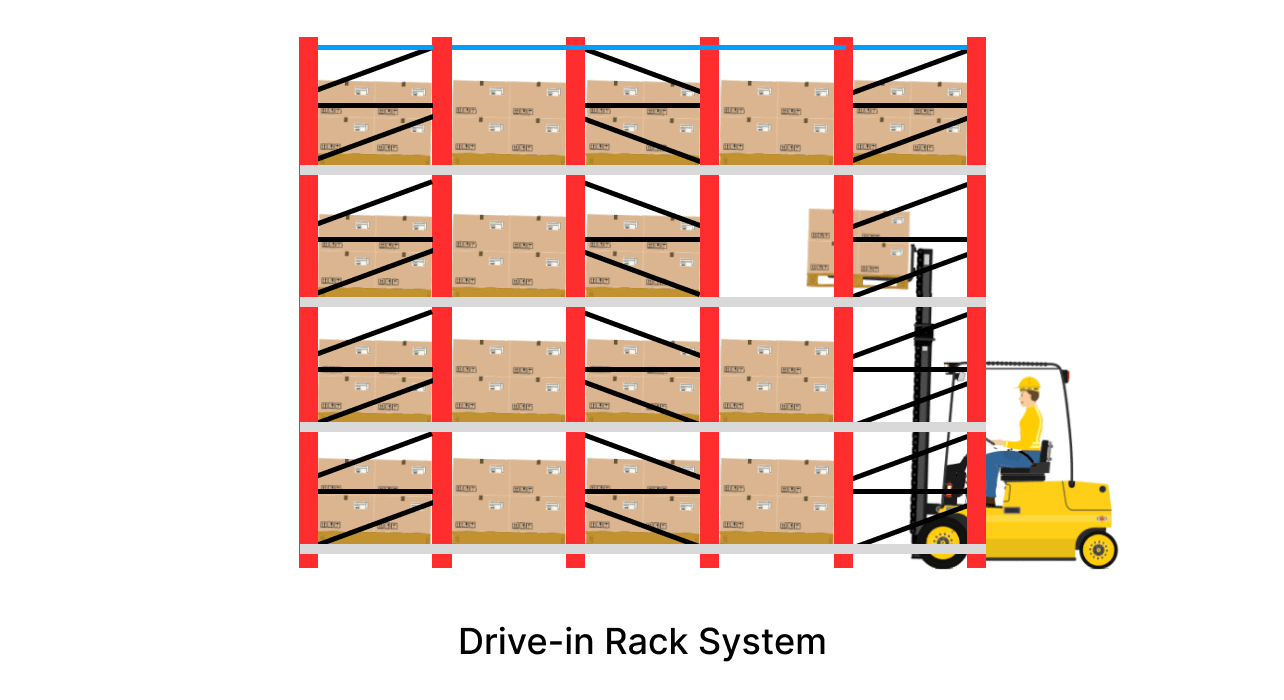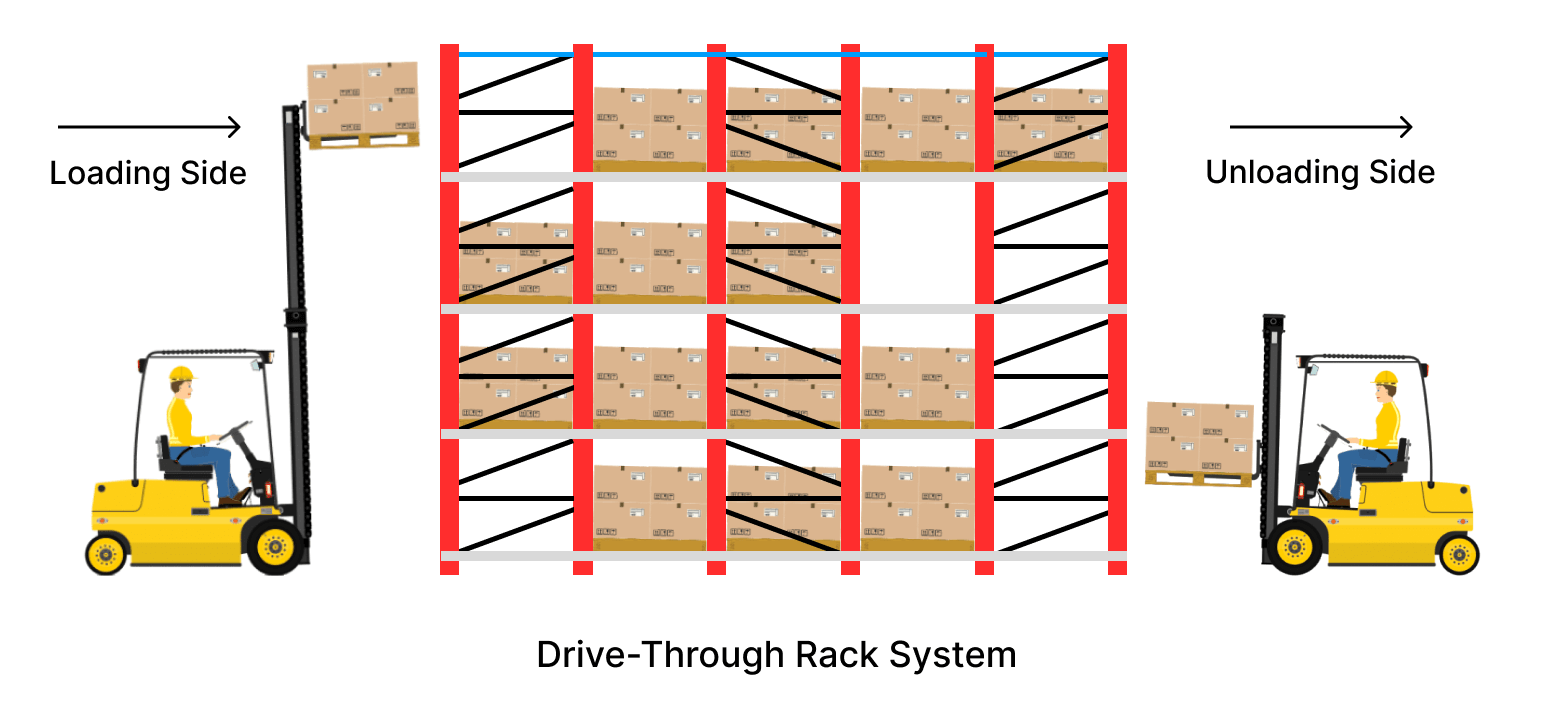Call Us :8615298359310
Call Us :8615298359310
Among the myriad storage solutions available, drive-in racking and drive-through racking stand out as desirable options for maximizing storage density.
This comprehensive guide vets the nuances of these systems, highlighting their similarities, differences, and optimal applications.
Both Drive-in and Drive-through racking systems fall under the umbrella of compact storage solutions. They share a fundamental design principle: forklift trucks enter the racking structure directly to load and unload pallets, eliminating the need for multiple aisles between rows.
Key features include:
While these systems share numerous similarities, their operational methodologies and ideal applications differ significantly.


Before examining their distinctions, it's essential to recognize the common ground between Drive-in and Drive-through racking:
1. Structural design: Both systems utilize a robust framework that allows forklifts to maneuver within the racking itself.
2. Space optimization: these systems significantly increase storage density compared to conventional racking by limiting aisle space.
3. Inventory control: Dedicating lanes to specific product references enhances stock management and organization.
4. Temperature-controlled storage: The compact nature of these systems makes them ideal for cold storage applications, reducing the total volume requiring temperature control.
Diverging Paths: LIFO vs FIFO Inventory Management
The primary distinction between Drive-in and Drive-through racking lies in their inventory management methodologies:
This fundamental difference in operation dictates the suitability of each system for various industries and product types.
While the core concepts remain similar, several operational aspects differentiate these systems:
o Drive-in: Single entry/exit point
o Drive-through: Separate loading and unloading access
o Drive-in: Reversing required for pallet retrieval
o Drive-through: Continuous forward movement possible
o Drive-in: Generally limited by forklift reach
o Drive-through: Can accommodate longer lanes due to pass-through design
o Drive-in: Limited, best for non-perishable goods
o Drive-through: Excellent, ideal for perishable items
The choice between Drive-in and Drive-through racking can significantly impact warehouse layout and space utilization:
1. Product rotation is less critical
2. Storage density takes precedence over accessibility
3. Inventory consists of non-perishable or slow-moving items
1. Strict stock rotation and freshness management
2. High-volume throughput of perishable goods
3. Compliance with first-in-first-out inventory practices
This system is particularly valuable for:
When deciding between drive-in and drive-through racking, warehouse managers must weigh several factors:
o Shelf life
o Rotation requirements
o Volume and variety of SKUs
o Storage density vs. accessibility
o Throughput speed
o Stock management practices
o Available floor space
o Ceiling height
o Loading dock configuration
o Anticipated growth in inventory volume
o Potential changes in product mix
o Forklift operator skill requirements
o Ease of rack inspection and repair
The choice between drive-in racking and drive-through racking hinges on a nuanced understanding of product characteristics, operational requirements, and long-term business objectives.
Drive-in racking provides unparalleled storage density for non-perishable goods and slower-moving inventory. In contrast, drive-through racking ensures optimal stock rotation for perishable items and high-throughput operations.
Are you still leveraging the strengths of either drive-in or drive-through racking to create a warehouse, you’re not alone. Don’t hesitate to contact us, our team of experts will advise you on the best storage solution for your warehouse.
Copyright © 2024 Jiangsu VISON Logistics Technology Co., Ltd. All Rights Reserved.  Network Supported
Network Supported
Sitemap | Blog | Xml | Privacy Policy